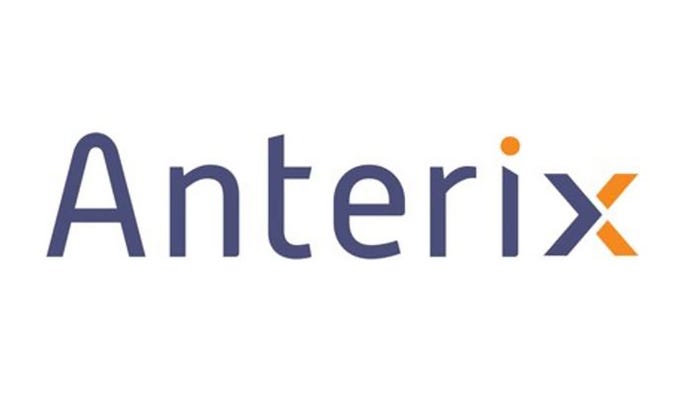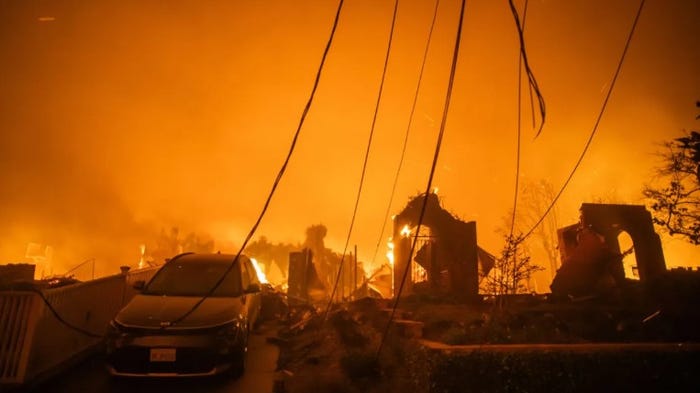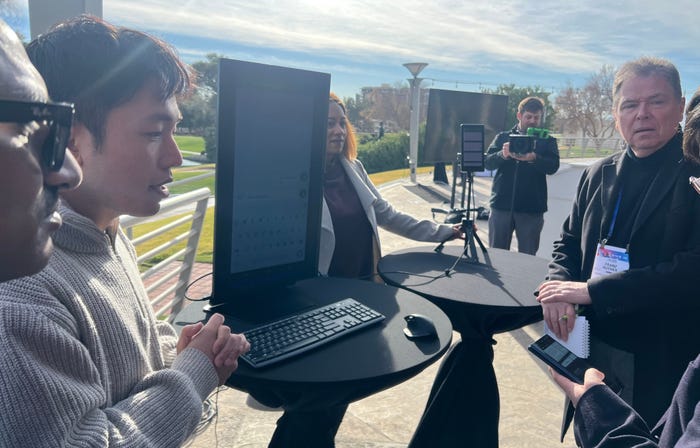Spectrum hungry cast eye to UHFSpectrum hungry cast eye to UHF
For a spectrum-hungry world, UHF television bands are receiving increased attention as a place to find more capacity for additional public unlicensed use, akin to the 2.4 GHz Wi-Fi model. Frequencies below 2 GHz are particularly desired for the ability to penetrate trees, walls and other obstacles, as well as needing less power for portable consumer devices.
March 1, 2004
For a spectrum-hungry world, UHF television bands are receiving increased attention as a place to find more capacity for additional public unlicensed use, akin to the 2.4 GHz Wi-Fi model. Frequencies below 2 GHz are particularly desired for the ability to penetrate trees, walls and other obstacles, as well as needing less power for portable consumer devices.
In remarks made at the January 2004 Consumer Electronics Show, Federal Communications Commission (FCC) Chairman Michael Powell indicated parts of the UHF TV band would become available for reuse after the conversion to digital television occurs. However, both Powell and the National Association of Broadcasters (NAB) have indicated the switchover from existing analog broadcast technology is unlikely by its initially scheduled date of Dec. 31, 2006.
To facilitate the turnover, TV broadcasters were allocated a free digital television (DTV) license. As of February 2004, 1155 out of 1700 stations in 203 markets that serve 99% of U.S. TV households had begun DTV broadcasts. But until 85% of U.S. households are receiving digital TV broadcasts, broadcasters won’t be required to shut down their NTSC analog operations and release those licenses. “There have been increasing sales of HDTVs every year, but I don’t have one yet,” said NAB spokesperson Jeffrey Yorke, explaining that the $2000-and-up cost of the sets has limited their purchase to affluent households.
Advocates don’t want to wait for a DTV switchover to start reclaiming and using UHF TV bands.
“Spectrum is being very inefficiently used,” said Dr. Gerald Faulhaber, professor of public policy and management at the University of Pennsylvania’s Wharton School. “The government allocated UHF spectrum in the [1950s] for what they thought was a very good reason: the VHF band was being monopolized by the big networks, and at the time, everybody was crazy for localism, so the FCC thought it was a good idea to create some local content. … But it turned out that nobody was interested in this [UHF] stuff.”
Faulhaber and others believe actual usage of UHF television spectrum is quite low, and smaller broadcasters stay on the band primarily to get free carriage on cable networks.
“If you look at the dial in any given market, there are a lot of channels that aren’t being used,” said Peter Pitsch, director of communications policy for Intel. “The UHF channels from 20-50 represent a great opportunity.” However, it should be noted that the FCC’s mandate concerning the UHF band concerns only channels 52-69.
Some would like to see any returned spectrum turned into a public “commons” without exclusive rights, usable by anyone. “The broadcast bands could be the perfect ‘national park’ for unlicensed wireless broadband,” said Michael Calabrese, vice president of New America Foundation, a Washington, D.C.-based public policy group.
New America Foundation has formally studied the current use of UHF TV broadcast channels 52-69 in the upper and lower 700 MHz bands as a part of its policy initiative to free more licensed and unlicensed spectrum for public use.
In a white paper entitled Reclaiming the “Vast Wasteland”: Unlicensed Sharing of Broadcast Spectrum, the group used two methodologies to assess current usage.
First, existing allocation and usage was examined from a statistical viewpoint. While 67 usable local TV broadcast channels in the VHF and UHF bands are defined, the average market receives only a little more than seven channels, leaving almost 90% of the TV broadcast spectrum empty on average, with most of the empty space intentionally put aside for “guard band” interference protection.
The remainder often is unassigned, especially outside of the largest viewing markets. In addition, television-station allocation is skewed toward lower frequency channels that offer superior transmission. Moving up the television dial, stations become fewer and farther between, especially beyond the core channels of 2 through 51.
The second methodology involved tallying licensed stations across the nation’s 210 designated market areas and analyzing allocation and percentage of viewing households. Based on this data, New America concluded there is just a 7% chance that a high-powered station is operating on a TV channel within the 52-69 range in a media viewing area. However, the study did not consider the potential that stations using those channels are most likely viewed over cable or satellite systems.
In formal comments to the FCC, New America proposed three distinct methods of allocating unlicensed access to broadcast spectrum, regardless of frequency.
In the first, dedicated unlicensed access would allocate a band of frequencies solely on a shared basis to devices operating without interference protection, similar to how 2.4 GHz spectrum currently is used.
In the second method, underlay access would allow license-exempt devices to operate alongside licensed services on a localized and low-power basis to avoid causing interference. New America believes low-power, unlicensed underlay access could be allowed across many existing licensed bands, similar to the way low-power “micro” FM radio stations are currently licensed by the FCC for use by non-profit community organizations.
Underlay networks would take advantage of mesh networks, where each station in the network is both a transmitter/receiver and a repeater for other traffic. By deploying a number of stations in a distributed fashion — each station can talk to one or two others — coverage can be extended to overcome the limitations of physical obstacles and distance.
In the third option, opportunistic unlicensed access would give “smart” radio devices the right to transmit on licensed frequencies or government bands where primary services do not fully utilize the spectrum. Leveraging the development of software defined radios (SDRs), unlicensed devices would incorporate various schemes such as “looking” before transmitting to protect against interference.
For UHF bands, New America has proposed a series of transitional steps to allow the gradual introduction of unlicensed devices onto unused broadcast frequencies. At first, unlicensed devices would be permitted to operate on the guard bands and unassigned 52-69 channels.
Because few stations operate on these channels and they have been designated for early relocation to DTV, a large amount of spectrum would be available for immediate use. As licensed users vacate the band, unlicensed devices would be granted the full frequency range for dedicated use, with programmed safeguards to prevent interference with public-safety operations in the upper 700 MHz band. Once the DTV transition is complete, former analog guard bands in the range from channels 2-51 would be made available.
The most radical proposal on the table from New America is the opportunistic sharing of unused licensed broadcast capacity, which broadcasters are most likely to oppose due to a potential for interference with existing operations. Many broadcasters do not transmit around the clock, leaving the airwaves open during some portions of the night and early morning, nor do all broadcasters transmit signals at full power.
Consequently, individuals should be able to use the spectrum — on a listen-before-transmit basis using smart radio technology to avoid interference — when broadcasters aren’t fully using spectrum on licensed channels, the proposal suggests.
Thomas Hazlett, senior fellow with the Manhattan Institute for Policy Research, favors a less radical approach to spectrum reform than the open commons philosophy. Instead, Hazlett favors awarding spectrum on the basis of “permissive licenses” that would allow the licensees broad discretion, similar to the rights enjoyed by wireless telephone operators in the U.S.
“Despite woeful under-allocation of radio spectrum — 189 MHz for the total industry, counting generously — the wireless carriers are intensely competitive, highly efficient, and provide a far-reaching mix of valuable services to over 150 million subscribers,” Hazlett said.
Under permissive licensing, licenses would outline the operating frequency, but licensees would retain latitude over intra-band spectrum allocation, operating structures, services, technologies, standards, equipment and business models — a far cry from today’s FCC licenses that dictate how licensees should operate and even what types of equipment can be used.
“It’s insanely inefficient to have a 1941 TV standard and a 1940s spectrum allocation taking up the huge chunk of the most valuable spectrum there is, in the VHF/UHF band,” Hazlett said. “That spectrum should be put out to reallocation to wireless broadband and mobile telephony.”
Like New America, Hazlett favors the release of guard-band channels and spectrum reserves, but for commercial use in an environment that keeps spectrum access as cheap as possible. He also favors some localized property rights for spectrum, allowing residents, offices, campuses, corporate parks and the like to use airspace with a right to be protected from some forms of interference. Interference limits and disputes would be resolved within a “spectrum court” system, with damages for radio interference having to be proved and compensation awarded should interference be demonstrated.
Open commons advocates are likely to find themselves in conflict with the wishes of Congress. According to Lauren Patrich, spokeswoman for the FCC’s Wireless Telecommunications (WTC) Bureau, the Auction Reform Act of 2002 directed the FCC to conduct auctions of the 700 MHz band before the expiration of the commission’s auction authority on September 30, 2007. Auctioning of the lower 700 MHz band was conducted in late August through early September 2002. The 102 winning bidders paid more than $88 million dollars for 484 licenses around the country.
Dates for the upper 700 MHz band auction haven’t been set, because the commission first wants to complete open proceedings concerning digital television and third-generation wireless services, said Peter Tenhula, acting bureau chief and director of the FCC’s Spectrum Policy Task Force.
Public-safety organizations are lobbying hard for a chunk of upper 700 MHz spectrum. The Spectrum Coalition for Public Safety wants Congress and the FCC to stop the upper 700 MHz auction and allocate a total of 10 MHz of spectrum in the 700 MHz band for public safety and homeland security use. Further, they would like to see a “no-strings” mandate for TV broadcasters to clear the 700 MHz spectrum by Jan. 1, 2007.
With reporting by Glenn Bischoff in Chicago.



